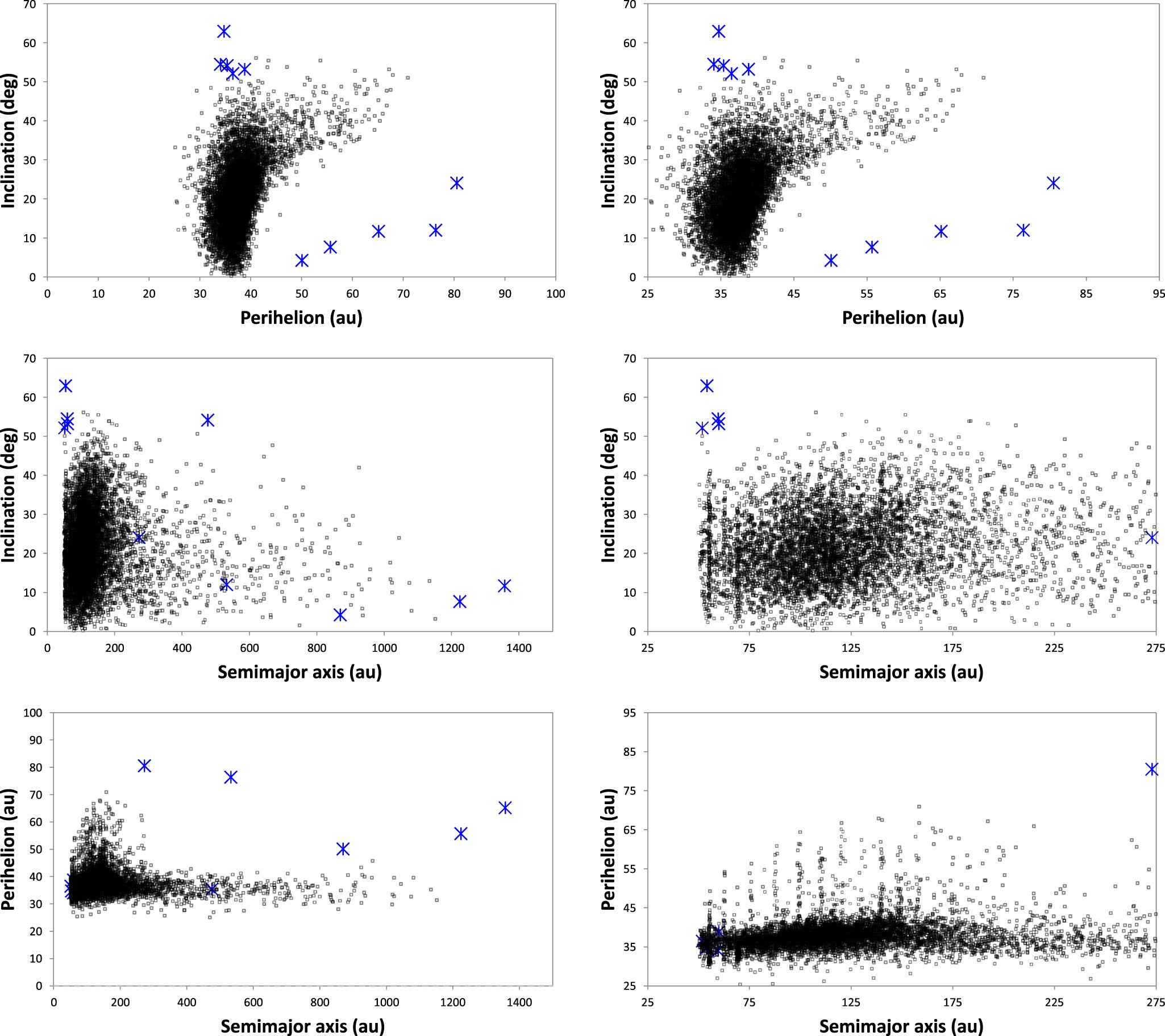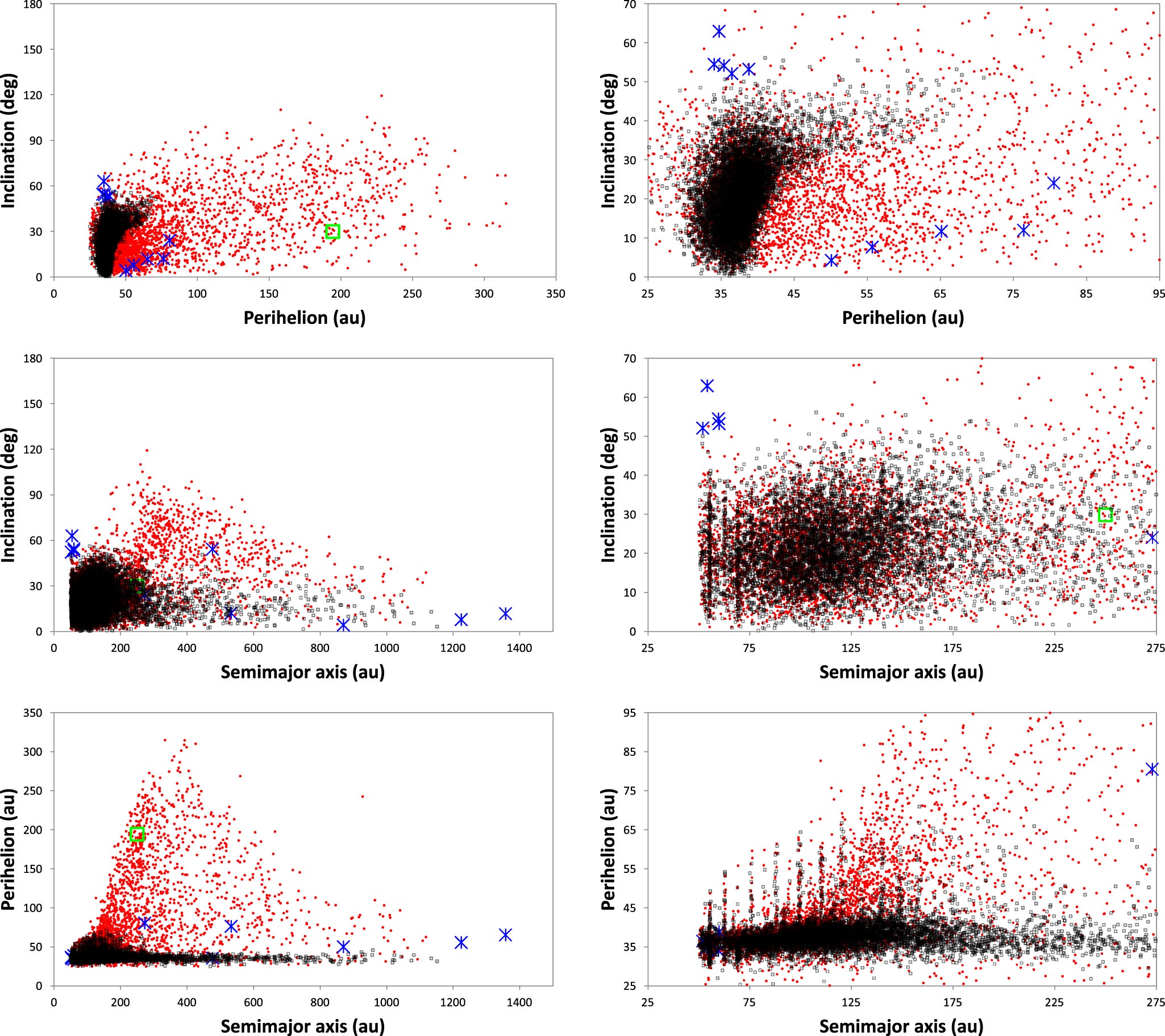Beyond Neptune lies the Kuiper Belt, a vast region of icy bodies offering crucial insights into the solar system’s formation. These trans-Neptunian objects (TNOs) illuminate the dynamic history of the outer solar system.
However, their unusual orbits and distribution present anomalies that challenge current models. Researchers now propose these mysteries may indicate the presence of an undiscovered Earth-like planet.
The Kuiper Belt begins at about 50 astronomical units (au) from the Sun, stretching far beyond the orbit of Neptune. More than a thousand TNOs have been identified, but their varied behaviors defy simple explanation.
Four key features of these distant objects present the greatest challenges to current models.
Detached TNOs follow orbits that place them beyond Neptune’s gravitational influence. With perihelia exceeding 40 au, they avoid the gravitational scattering typical of closer TNOs. Though they account for about 10% of observed distant TNOs, this figure is likely higher due to the difficulty of detecting such remote objects.
Existing models, such as Neptune’s resonances or chaotic diffusion, fail to explain their detached nature, especially for objects with low orbital inclinations or those far beyond 150 au. One possibility is that a rogue planet, about 1–2 times Earth’s mass, influenced their paths early in the solar system’s history.
Another enigmatic group comprises high-inclination TNOs, whose orbits tilt at angles greater than 45°. These objects represent roughly 2% of observed TNOs beyond 50 au, though their actual prevalence is likely much higher.
Related Stories
Theories involving Neptune’s migration or rogue planets fail to generate the observed number of high-inclination objects. Some researchers propose a hidden reservoir of these TNOs, suggesting a previously unknown gravitational influence within the Kuiper Belt.
Extreme TNOs exhibit the most unusual orbits, including objects like (90377) Sedna, whose perihelia exceed 60 au. These peculiar trajectories indicate the influence of forces beyond the known giant planets.
While theories involving stellar encounters or short-lived rogue planets provide partial explanations, they fall short of accounting for the diversity within this group. The existence of extreme TNOs strongly hints at additional gravitational forces shaping their orbits.

Finally, some TNOs are locked in long-term resonances with Neptune, maintaining their orbits for billions of years. These stable resonant TNOs occupy resonances such as 2:1, 3:1, and 5:1, persisting over gigayear timescales. While their primordial origin seems evident, current models struggle to explain how these populations formed and remained stable.
To solve these puzzles, researchers have proposed the existence of an undiscovered Earth-like planet in the Kuiper Belt. In a recent study, Dr. Patryk Sofia Lykawka of Kindai University and Dr. Takashi Ito of Japan’s National Astronomical Observatory conducted simulations of the early solar system.
Their findings suggest a planet with a mass 1.5–3 times that of Earth could be orbiting between 200 and 500 au. Such a planet, with an inclined orbit of around 30°, could explain the Kuiper Belt’s detached, high-inclination, and extreme TNOs.

“An Earth-like planet far beyond Neptune could redefine our understanding of the solar system,” says Lykawka. He adds, “It would not only restore the count of nine planets but also challenge our theories of planetary formation.”
This proposed planet is distinct from the more massive Planet Nine hypothesized by Caltech researchers in 2016. Planet Nine, with an estimated mass of 5–10 Earths, was suggested to explain the clustering of certain distant TNOs.
However, subsequent studies have challenged this clustering, and the Planet Nine model was not designed to address the Kuiper Belt’s broader orbital structure.
Lykawka and Ito’s simulations take a different approach, focusing on how an Earth-like planet could sculpt the Kuiper Belt’s features over billions of years. Their models show that such a planet would have the mass and orbital inclination necessary to create the diverse TNO populations observed today.

The search for this hidden planet is gaining momentum. Advanced telescopes and international collaborations aim to identify more extreme TNOs and refine the Kuiper Belt’s orbital structure. Future missions could detect this elusive planet within the next decade.
Astronomers like Michael Brown and Konstantin Batygin, who pioneered the search for Planet Nine, remain optimistic. “With the advancements in telescope technology, we are getting closer to solving this mystery,” says Brown.
Dr. Lykawka is similarly hopeful: “The discovery of a single new TNO could revolutionize our theories about the solar system’s formation.”

The Kuiper Belt continues to challenge and inspire, offering tantalizing clues about our cosmic origins. Whether through detached TNOs, high-inclination objects, or extreme orbits, each discovery deepens our understanding of this distant frontier.
If an Earth-like planet awaits beyond Neptune, it promises to open a new chapter in planetary science.
Note: Materials provided above by The Brighter Side of News. Content may be edited for style and length.
Like these kind of feel good stories? Get The Brighter Side of News’ newsletter.
The post A hidden Earth-Like planet may be lurking in the Solar System appeared first on The Brighter Side of News.